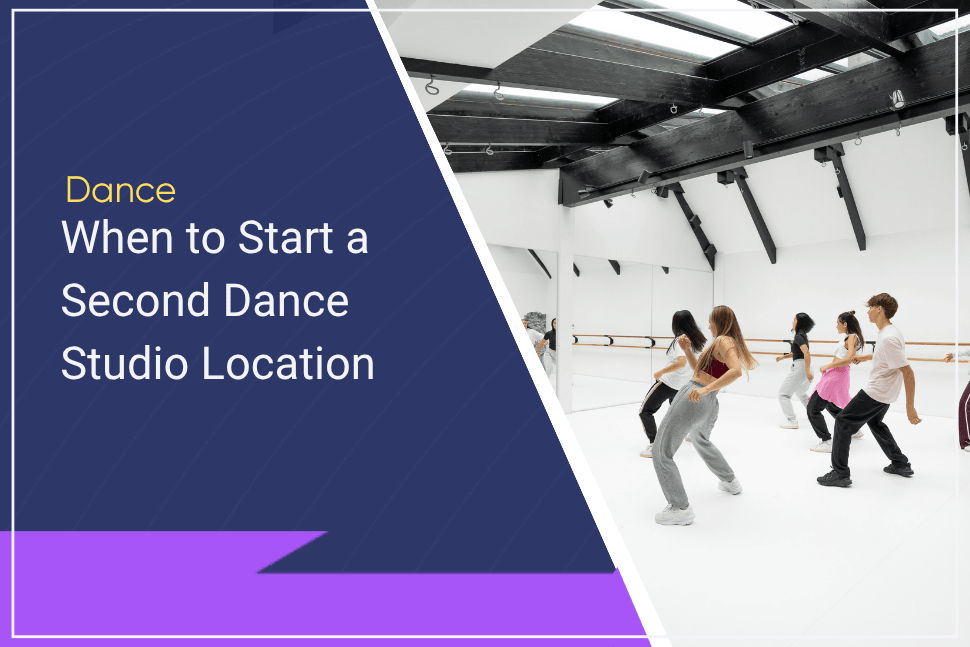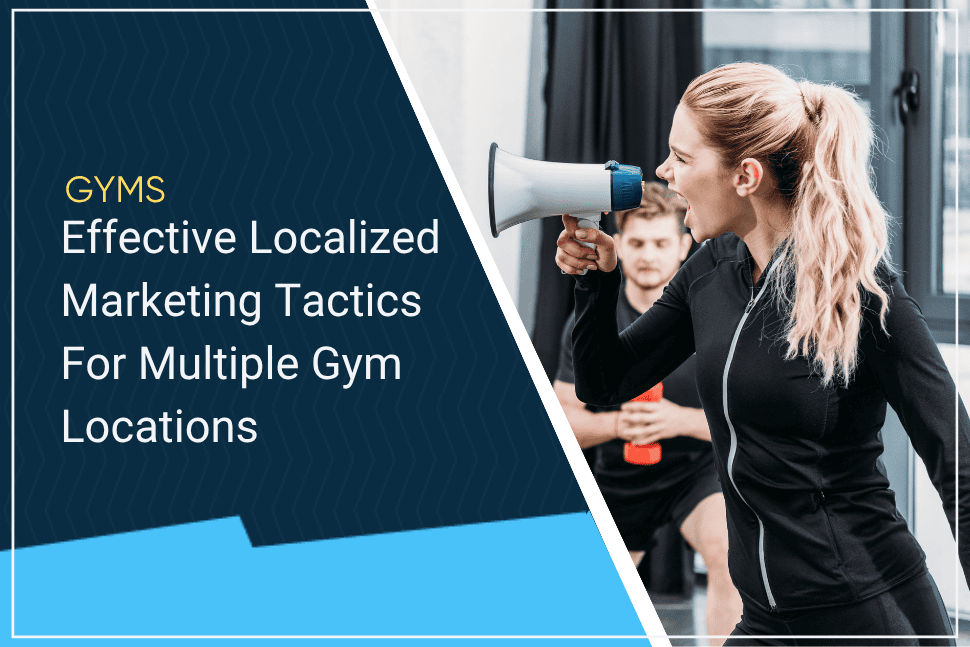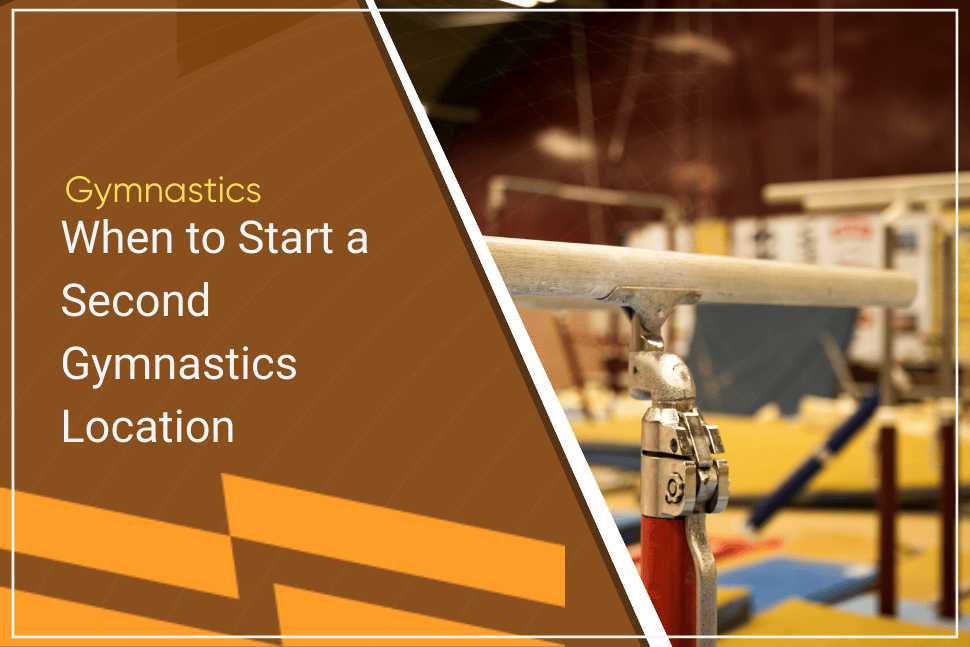When to Start a Second Dance Studio Location: Key Factors to Consider

Opening your first dance studio was a leap of faith — and it worked. Now, your classes are filled, your brand is established in your area, and students are clamoring for more. The big question is: Are you ready to do it all over again?
Opening a second location is a tremendous accomplishment for any dance studio owner. It’s a signal that your business is growing — but also one that presents new challenges. From gauging market demand and nailing down the right site to juggling cash and bringing on credentialed instructors, success hinges on more than passion and choreography. It takes strategy, systems, and timing.
In this guide, we’ll cover everything you need to consider before opening your second dance studio—so you can scale with ease and ensure your new studio’s long-term growth.
Assess Market Demand for Dance Classes in a New Area
Before you decide to open a second dance studio, you first need to confirm there is an actual, proven demand for your services in this new area. Your current dance studio business might be doing well, but success doesn’t always translate from one block — or borough — to the next. So take the time to research the local market to avoid making a big mistake.
Conduct In-Depth Market Research
The first step is to collect quantitative and qualitative data. Examine census data, community surveys and local school enrollments to learn about population size, age breakdown and family composition.
Are there many young families? Is the area growing rapidly?
These are potential signs that dance classes might soar.
Analyze Demographics and Trends
Target the demographics who dance most frequently—children, teenagers, young adults. Find out if there’s a strong interest in particular types of dancing, such as hip hop, ballet, Latin or contemporary dance. Get a sense of what people are passionate about by joining local events or social media groups, if possible.
Identify Your Target Audience
After you have wrapped your brain around the general market, you should investigate your ideal student base. Is it toddlers beginning with creative movement dance lessons, teens training for competition, or adults who seek recreational classes?
Each segment has different scheduling desires and expectations, so it's important to customize your program to the appropriate segment.
Evaluate the Competition
Survey the competitive landscape. Are there other existing dance studios in the vicinity? What styles are taught, and how are their classes priced and scheduled? Check out their websites, read reviews and, if it’s available, visit a trial class. Identify needs you might fulfill, such as unserved age groups, weekend classes or a wider style offering.
Choose a Location for the Second Studio
Where you set up your second dance studio can potentially be your biggest make-or-break. It’s about way more than finding a cheap space—it’s about finding one that draws foot traffic, is accessible for your ideal students, and helps to raise your studio’s visibility and status in the community.
Prioritize Accessibility and Visibility
Start by narrowing your search to areas where your target audience lives, works, or commutes. Does the premises face a busy thoroughfare or a popular shopping complex? Will people driving or walking by be able to see your signs?
A high-visibility location can generate organic interest and walk-ins — before you even get started with a formal marketing effort.
Consider Convenience and Infrastructure
It should be as easy as possible for students and parents to get to your studio. Look for:
- Ample parking for drop-offs and evening classes
- Proximity to public transportation, especially in urban areas
- Nearby schools, daycare centers, or community hubs, which can lead to natural partnerships and student referrals
The nearer you are to people's homes, the more families will come to your studio as part of their weekly routine.
Check Zoning and Legal Requirements
Before signing a lease, ensure that the building is zoned for dance or fitness studio use. Some commercial spaces won’t allow amplified music, foot traffic or particular hours of operation — any of which could throw off your class schedule. Check that you can secure all required business licenses, occupancy permits and insurance sign-offs for the space.
Use a Studio Location Checklist
In order to remain focused and objective in your search, use the following checklist for your new dance studio site:
- Square footage and ceiling height
- Natural light and ventilation
- Sound insulation
- Bathroom and changing room access
- Emergency exits and safety compliance
Evaluate Your Financial Readiness for Expansion
Before signing a lease, hiring employees or advertising a grand opening, there’s one query that should be answered with absolute honesty: Can your business afford a second location?
Opening a second dance studio location is an exciting proposition, but unless that plan is backed with a solid financial foundation, it’s a fast way to run your resources to exhaustion, if not to drive your business into the ground.
Assess Your Current Studio’s Financial Health First
Your second dance studio space should be built on the success of your first. Look at your financial records for the last year or so to assess profitability, cash flow, and stability. Is your current studio consistently generating revenue above operating costs? Are you experiencing strong student retention, low debt and a gradual increase in enrollment? All are signs that you have a thriving dance studio and are prepared for growth.
You also need to factor in the efficiency of your existing systems. If your first location has difficulty with billing, scheduling, or payroll, those problems will only be multiplied by expansion. You need to get the kinks out of operations before scaling.
Determine the Real Cost of Opening an Additional Studio
Expansion costs are often underestimated. Aside from rent and basic renovations, you will want to budget for:
- Studio fit-out: Flooring, Mirrors, Lighting, Audio meditation systems
- Licensing and legal fees
- Marketing and signage
- Furnishings and technology (computers, booking software, Wi-Fi)
- Labor expenditure (also: recruiting, onboarding, and training)
- Insurance and utilities
It’s also a good idea to have a contingency fund for unexpected costs in the first 6 to 12 months.
Break these into one-time, fixed costs and recurring monthly costs. This can help you to project how much capital you will need to start and how much your new location will need to earn to break even.
Develop a Comprehensive Business Plan
Handle your second studio as if it were a new business. Create a business plan that includes;
- Your mission and target audience
- Class offerings and pricing structure
- Staffing needs
- Marketing strategy
- Three-year financial projections
Your forecast should include projected income (based on expected class attendance) and all fixed and variable costs. Be conservative with your estimates—especially during the first 6–12 months as you build enrollment.
Explore Financing Options
Several financing routes exist if you don’t have the cash to bankroll the continued growth:
- Bank or credit union small business loans
- SBA loans (if you’re in the U.S.) for small business friendly terms
- Angel investors who believe in your brand and want to be a part of your growth
- If you're considering broader scaleability, franchising or licensing models should be explored.
Consider the long-term financial effects and the cost of repaying before incurring debt or diluting equity. The right funding option helps you grow while you continue your current business.
Designing and Equipping the New Studio
Designing a space that is both inviting and functional is one of the more rewarding parts of opening a second dance studio—but it’s also something you’ll need to carefully plan. The right studio design isn’t merely eye candy; it optimizes performance, fosters safety, and helps students and instructors feel at home.
Cultivate a Multi-purpose, Flexible Studio Layout
Your floor plan should be suitable for a variety of dance types and class structures. For example:
- One large, open room with mirrored walls and barres will be used for ballet and contemporary classes
- A smaller second studio that will work well for hip hop, jazz, or private instruction
- If you offer children’s classes, add an area to accommodate waiting parents and younger siblings
- Flexible, modular spaces permit a wide array of programming and seamless transitions between classes
Invest in High-Quality Dance Equipment
Don’t skimp on the tools that drive your classes. The essentials include:
- A durable professional-grade padded sprung floor, which helps protect knees and ankles and minimizes the chance of injury
- Full-length mirrors for instruction and self-correction
- Sound equipment that offers clean sound without distortion
- Lockable storage facilities for props, costumes and portable equipment
Prioritize Comfort and Functionality for Instructors and Students
Your studio isn’t just where you dance—it’s where your students and instructors spend hours each week. Features that make the space feel welcoming and useful should be your priorities:
- Fitting rooms or locker rooms with hooks, benches, and privacy
- Reception or front desk check in / retail sales / parent communication
- Lounge spaces for teachers to prepare between classes or relax
- Wi-Fi and security systems
Consider ADA compliance and ensure that your space is accessible for students of all abilities.
Ensure Safety and Compliance
Safety should be baked into your design, not added as an afterthought. Confirm that:
- There is sufficient illumination and signage, and the necessary means and exits for emergency evacuation exits from the premises.
- Ventilation systems are compliant with code for healthy breathing
- You are in compliance with all local building codes and occupancy requirements.
It is worth bringing in a professional studio designer or contractor who knows the particular needs of dance facilities.
Hiring and Training Dance Instructors
The success of your second dance studio involves not just location or design, but also the quality of your instructors. They are your studio’s lifeline, the ones who take classes to a whole new level, create loyal students, and are your studio’s voice. Hiring the right people and giving them the tools they need in order to succeed, is critical for a successful expansion.
Hire Versatile, Experienced Instructors
You’ll want to find teachers who are both skilled and flexible. Look for professionals who:
- Are well-versed in various dance styles (ballet, jazz, hip hop, contemporary and Latin)
- Have experience working with different age groups — toddlers to adults
- Can modify teaching styles for recreational and competitive dancers
An instructor who can teach across the styles and levels in the dance industry gives you more scheduling flexibility and eliminates the need to hire multiple specialists.
Develop a Formal Training and Onboarding Program
A great dancer is not necessarily a great teacher. You must establish a strong onboarding and training process in order to maintain consistency in your studio’s culture. This should include:
- A teacher's manual on class expectations, student behavior policy, dress codes and safety policy
- Methods to keep control of the classroom and communicate with children of various ages
- Training in your studio software systems (attendance, scheduling, or communication)
- A shadowing program with senior instructors or leadership team members
This onboarding investment ensures your new team is aligned with your studio’s values and your expectations from the outset.
Hire for Both Private & Group Instruction
To get the most out of your program offerings and revenue potential, look for instructors who are proficient in teaching both:
- Group classes, which require energy, engagement, and the ability to manage varying skill levels
- Private lessons, which require a more tailored, one-on-one approach to coaching and feedback
With instructors who do both, you’re able to provide flexible class structures as well as premium packages for students seeking extra help or preparation for competition.
Verify Certifications and Insurance
Before finalizing any hires, ensure that each instructor is properly:
- Certified, if relevant, by recognized dance training programs or associations
- Covered, whether it be by your studio's liability plan or personal professional liability insurance
Ensuring that all instructors tick these boxes helps protect your studio from a legal standpoint, as well as indicating professionalism and a focus on safety.
Develop a Marketing Strategy
A successful second location launch requires a savvy, nuanced marketing strategy that generates buzz and fills spots from the moment the doors open. The goal is twofold: attract new students in your new community while retaining and energizing your existing base.
Target the Local Community with a Strategic Launch Plan
Create a marketing strategy that specifically addresses your new neighborhood. Know the vibe, values and interests of your local area so you can make your messaging more personal and relevant. Advertise your grand opening in advance and often with flyers, local newspapers, community bulletin boards, and word of mouth.
Host a grand opening with complimentary trial classes, meet the instructor sessions, giveaways, or demonstrations. This is an opportunity for families and potential students to get a feel for your studio before they join.
Use Social Media and Online Ads
Social media is one of the most effective marketing resources you have. Leverage platforms such as Instagram, Facebook or TikTok for:
- Posting behind-the-scenes videos of the studio build-out
- Introducing new instructors
- Sharing student testimonials and the countdown to the grand opening
- Advertising introductory offers or trial sessions
- Showcase virtual dance classes
Complement organic posts with hyper-targeted paid ads that reach people in your area according to their interests (dance, fitness, kids’ activities). Don’t forget to claim and optimize your Google Business Profile so you show up in local search results.
Collaborate with Local Schools and Community Centers
Forging partnerships can significantly boost visibility. Reach out to:
- Public and private schools to conduct in-school dance demonstrations, after-school programs, or parent night promotions
- Community centers and libraries (offer free intro classes or workshops)
- Local companies and sports clubs to cross-promote and sponsor each other
Build Loyalty and Encourage Referrals
Retention is as vital as acquisition. Offer a loyalty program that incentivizes a long-term relationship — say, a discount on purchases, early access to special events, or a referral bonus. Implement a basic referral program in which every friend a current student brings in earns them a reward (for example, a studio credit or free class).
Email newsletters, birthday discounts, client/student spotlights, and seasonal promotions can also keep your studio front-of-mind and create that sense of community.
Community Outreach and Partnerships
Through connections with local schools, groups, and companies, your studio goes from simply a location to take dance classes to an integral and respected part of the community. Strategically reaching out and partnering fosters relationships that drive enrollment and reputation for years to come.
Build Local Relationships to Broaden Your Reach
Begin by reaching out to schools, community centers and business in your area. These do a lot of work and are commonly eager for some extracurricular options for students and their families — and your studio can be just the one they are looking for. Provide dance workshops at a school fair, volunteer to teach movement classes at the community center, or partner with businesses in your area that need promotion, as well. A dance demo at a community fair or school assembly might not seem like much, but it can create buzz and draw new students.
Partner with Studios and Fitness Professionals
Don’t think of other dance/fitness providers as your enemies, but rather how you can work together to reach a larger audience with better options. Co-host a seasonal showcase, start a community dance day or offer hybrid programs that pair dance with yoga, strength training, or mindfulness. Working together on these types of initiatives can help you gain exposure to new demographics while doing some good in the local wellness and performing arts community.
Create Inclusive Outreach Programs
Community programs should also address access and inclusiveness. Some ideas for programs that reach marginalized and underserved communities might include:
- Providing scholarships or reduced tuition for low-income families
- Offering free trial classes in local youth centers or after-school programs
- Collaborating with a nonprofit or youth group that wouldn’t otherwise have access to dance
These are the types of projects that show you care about your community and a way to showcase your studio as a business that gives back.
Get the Word Out on Digital Platforms
Don’t let your community service go unrecognized — highlight your outreach and partnerships using social media and local advertising. Share about events you teach in schools, yoga for charity classes or partner workshops. Celebrate student success stories, tag local partners in your posts, and invite the community to attend open houses or free classes.
Operational Systems and Processes
Start by evaluating the key systems you use daily in your existing studio. These may include:
- Class scheduling and student registration
- Payment processing and invoicing
- Attendance tracking
- Staff scheduling and payroll
- Communication with parents and students
If any of these are currently manual or inconsistent, now is the time to streamline them. A second studio multiplies your responsibilities—automation and standardization are essential for growth.
Use Technology Designed for Multi-Location Studios
You need effective dance studio management software. This is where tools like Gymdesk come in. Gymdesk is a modern studio management platform built with multi-location operators in mind. It allows you to:
- Manage multiple studio locations from a single dashboard
- Track revenue, class attendance, and memberships across sites
- Customize access for staff and instructors based on location
- Automate billing, renewals, and student communication
Whether you're just getting started or planning for long-term expansion, Gymdesk's franchise-ready functionality simplifies studio operations and supports consistent growth.
Conclusion and Next Steps
Opening a second dance studio location is a powerful milestone—and a bold commitment to growth. But it’s not a decision to take lightly. Like anything, success is based on careful planning, intelligent execution and understanding your studio’s mission and market.
- Assess local market demand for dance classes
- Evaluate your financial readiness and startup costs
- Choose a strategic, accessible location
- Hire and train qualified instructors
- Design and equip the studio for multiple dance styles
- Implement efficient operational systems like Gymdesk
- Develop a strong marketing strategy and loyalty programs
- Build community partnerships and outreach programs
By following these steps and staying true to your mission, your second location can become a thriving extension of your brand.
Gym management software that frees up your time and helps you grow.
Simplified billing, enrollment, student management, and marketing features that help you grow your gym or martial arts school.





